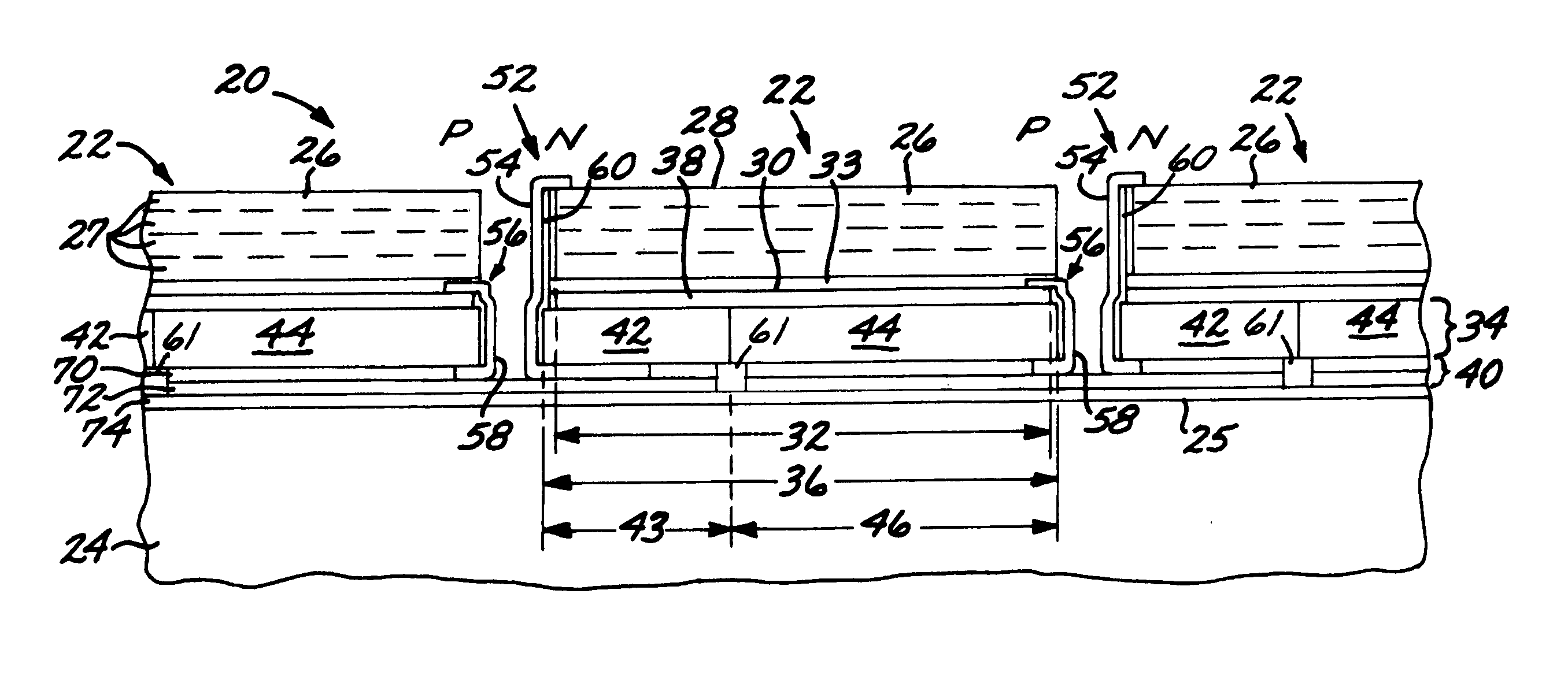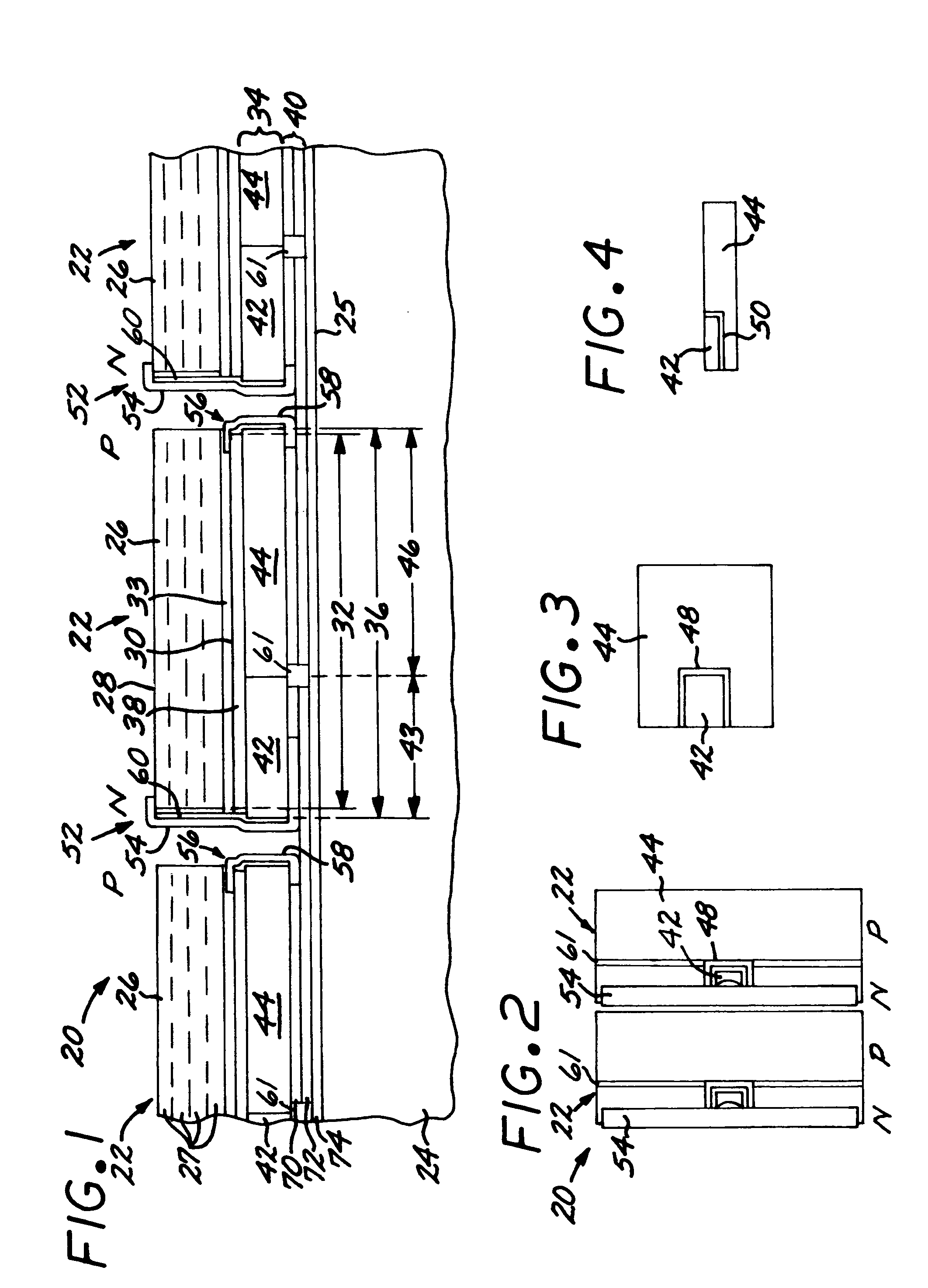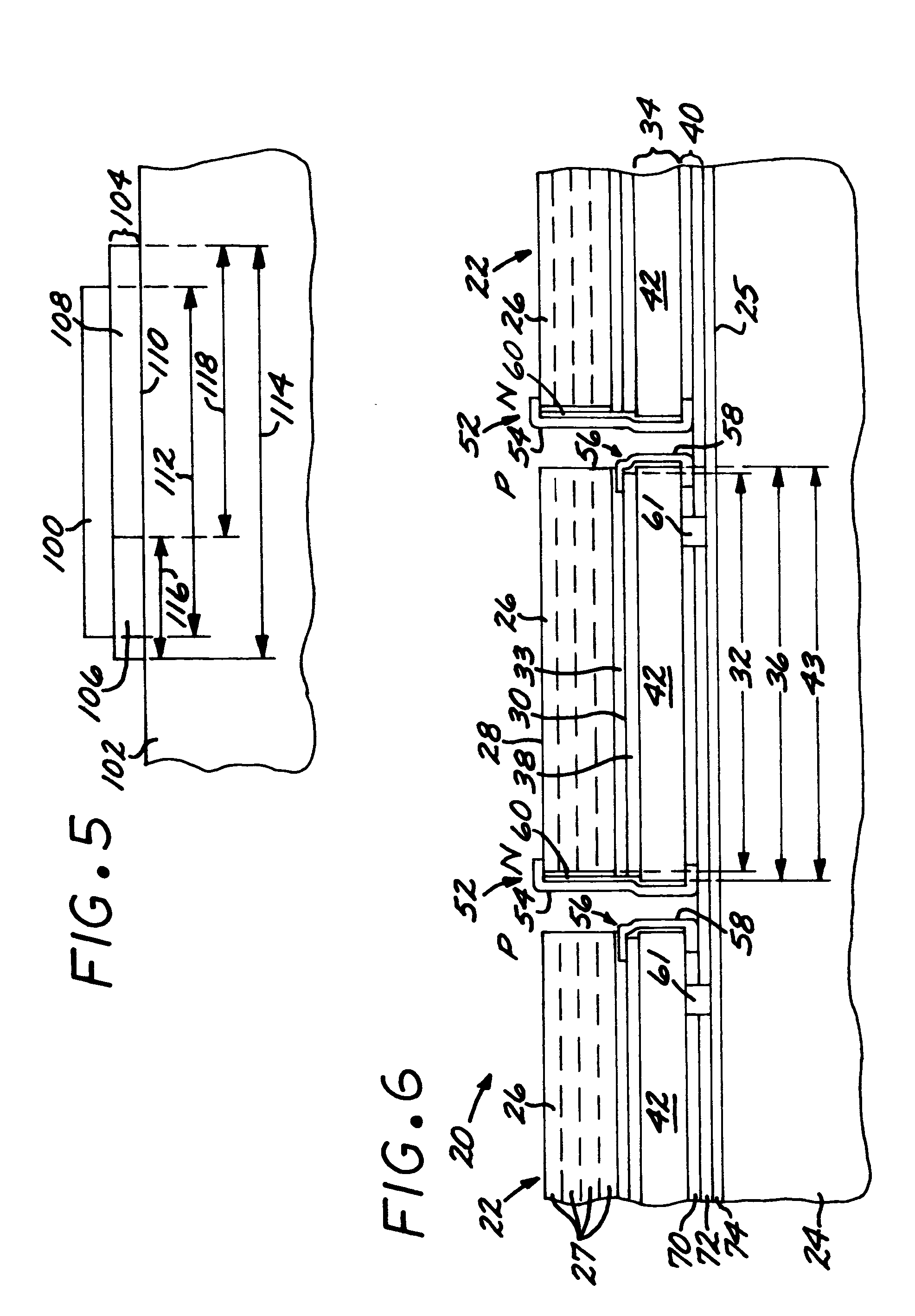Solar cell structure with integrated discrete by-pass diode
a solar cell and diode technology, applied in the direction of photovoltaics, electrical devices, semiconductor devices, etc., can solve the problems of limited voltage and current output of solar cells, solar cells, assembly difficulties, etc., and achieve the effect of small area and large area
- Summary
- Abstract
- Description
- Claims
- Application Information
AI Technical Summary
Benefits of technology
Problems solved by technology
Method used
Image
Examples
Embodiment Construction
[0023]FIGS. 1-2 depict a first embodiment of a solar cell structure 20. The solar cell structure 20 includes at least one, typically at least two, and in most cases a plurality of solar cell unit structures 22. Each solar cell unit structure 22 has a functional active semiconductor solar cell that produces a voltage between the front side and the back side when the front side is illuminated, but in most cases there are two or more of the solar cell unit structures 22 arranged in a series, parallel, or combined series / parallel array to produce the desired voltage and current outputs.
[0024] Each solar cell unit structure 22 includes a heat sink 24, and there may be (and usually are) more than one of the solar cell unit structures 22 on a single shared common heat sink 24, as illustrated. The heat sink 24 preferably has a substantially planar surface 25. The heat sink 24 is preferably made of a metal such as copper or aluminum, or a ceramic of good thermal conductivity such as aluminu...
PUM
 Login to View More
Login to View More Abstract
Description
Claims
Application Information
 Login to View More
Login to View More - R&D
- Intellectual Property
- Life Sciences
- Materials
- Tech Scout
- Unparalleled Data Quality
- Higher Quality Content
- 60% Fewer Hallucinations
Browse by: Latest US Patents, China's latest patents, Technical Efficacy Thesaurus, Application Domain, Technology Topic, Popular Technical Reports.
© 2025 PatSnap. All rights reserved.Legal|Privacy policy|Modern Slavery Act Transparency Statement|Sitemap|About US| Contact US: help@patsnap.com



